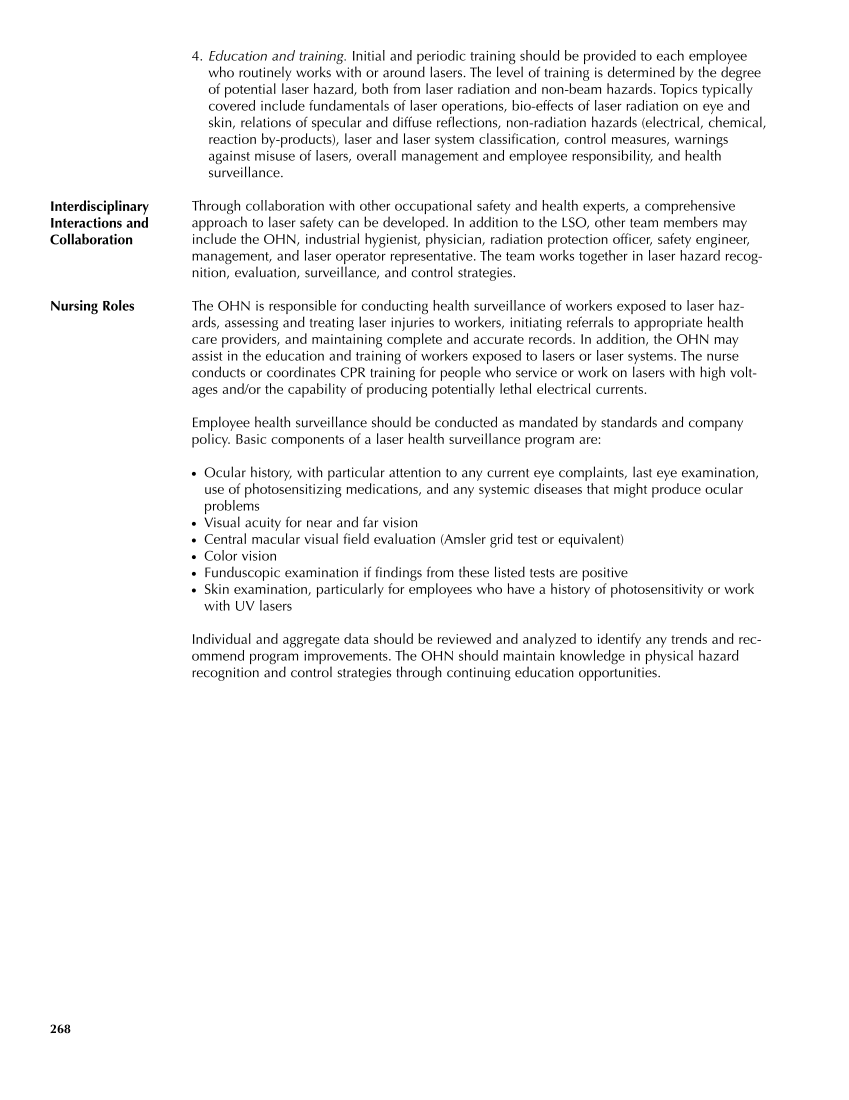4. Education and training. Initial and periodic training should be provided to each employee who routinely works with or around lasers. The level of training is determined by the degree of potential laser hazard, both from laser radiation and non-beam hazards. Topics typically covered include fundamentals of laser operations, bio-effects of laser radiation on eye and skin, relations of specular and diffuse reflections, non-radiation hazards (electrical, chemical, reaction by-products), laser and laser system classification, control measures, warnings against misuse of lasers, overall management and employee responsibility, and health surveillance. Through collaboration with other occupational safety and health experts, a comprehensive approach to laser safety can be developed. In addition to the LSO, other team members may include the OHN, industrial hygienist, physician, radiation protection officer, safety engineer, management, and laser operator representative. The team works together in laser hazard recog- nition, evaluation, surveillance, and control strategies. Nursing Roles The OHN is responsible for conducting health surveillance of workers exposed to laser haz- ards, assessing and treating laser injuries to workers, initiating referrals to appropriate health care providers, and maintaining complete and accurate records. In addition, the OHN may assist in the education and training of workers exposed to lasers or laser systems. The nurse conducts or coordinates CPR training for people who service or work on lasers with high volt- ages and/or the capability of producing potentially lethal electrical currents. Employee health surveillance should be conducted as mandated by standards and company policy. Basic components of a laser health surveillance program are: ● Ocular history, with particular attention to any current eye complaints, last eye examination, use of photosensitizing medications, and any systemic diseases that might produce ocular problems ● Visual acuity for near and far vision ● Central macular visual field evaluation (Amsler grid test or equivalent) ● Color vision ● Funduscopic examination if findings from these listed tests are positive ● Skin examination, particularly for employees who have a history of photosensitivity or work with UV lasers Individual and aggregate data should be reviewed and analyzed to identify any trends and rec- ommend program improvements. The OHN should maintain knowledge in physical hazard recognition and control strategies through continuing education opportunities. 268 Interdisciplinary Interactions and Collaboration
Purchased from OEM Press by (ge corporate access). (C) 2013 OEM Health Information, Inc. All rights reserved.












































































































































































































































































































































































































































